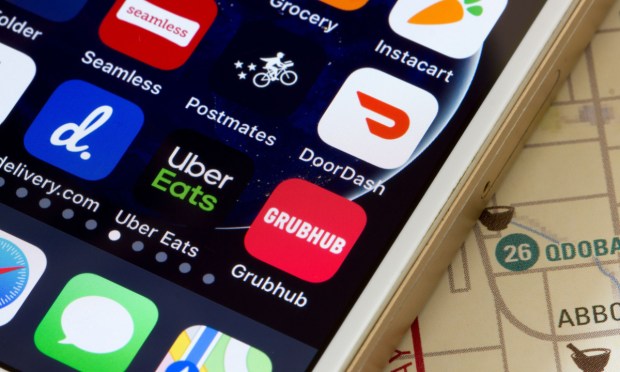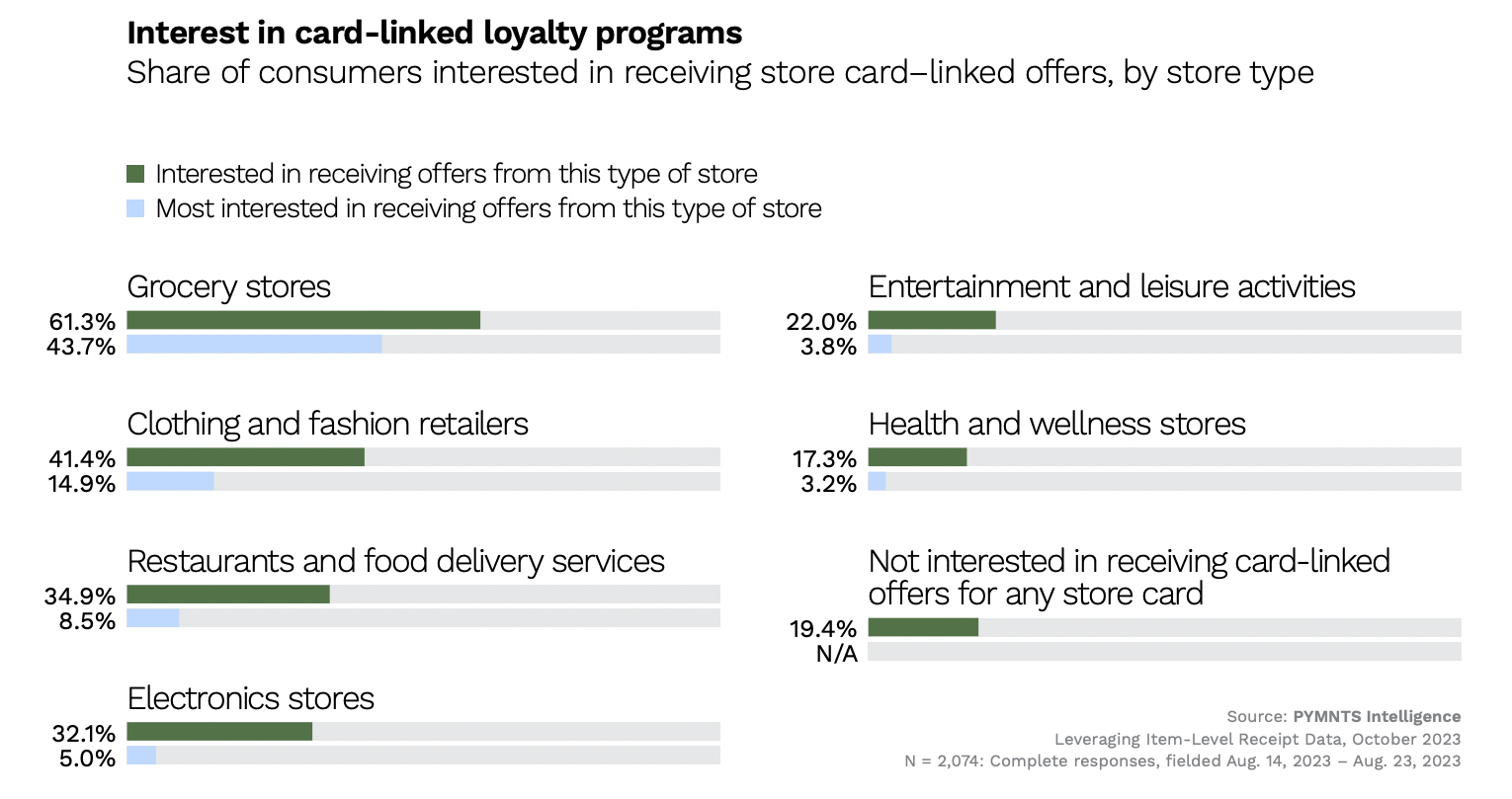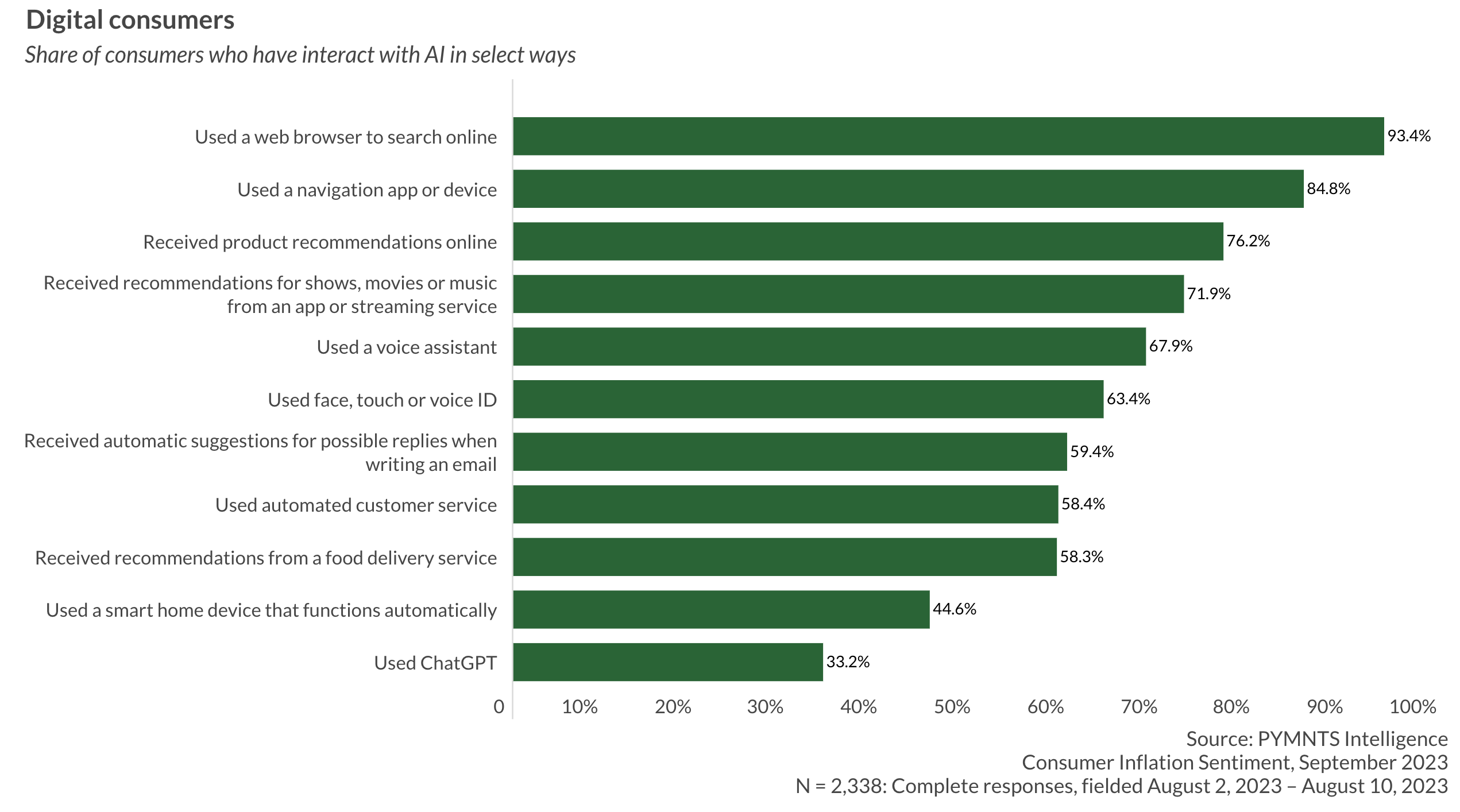
In 2023, restaurant aggregators have expanded the model, extending beyond food delivery, adding new features and finding innovative ways to drive loyalty.

In March, DoorDash launched a co-branded credit card in partnership with Chase, the DoorDash Rewards Mastercard, offering 4% cash back on orders placed via the aggregator or its subsidiary Caviar and a year of free DashPass.
In fact, the report “Leveraging Item-Level Receipt Data: How Personalized Card-Linked Offers Drive Store Card Usage,” a PYMNTS Intelligence and Banyan collaboration drawing from a census-balanced survey of more than 2,000 U.S. consumers, reveals that 35% are interested in receiving card-linked offers from restaurants and food delivery services. Plus, 9% cite this as the type of card-linked reward they are most interested in receiving.
Uber, for its part, pushed its delivery business far beyond the traditional restaurant delivery model. Earlier this month, the company launched “Store Pickup,” a feature that enables consumers to send delivery drivers to collect pickup orders from retailers and bring them to the person’s home or to a gift recipient.
“[The courier can] bring delight and actually be sort of a Secret Santa, delivering that package directly to the recipient,” Wendy Lee, director of delivery product management at Uber, told PYMNTS in an interview.
Grubhub is bringing Amazon’s frictionless checkout system to convenience stores at colleges and universities. The aggregator announced in August its partnership with the eCommerce giant to make Just Walk Out available on campuses.
“We’re looking at where it makes sense for us in locations that are accessible to students during those late hours, trying to keep those students on campus from going out late at night,” Phil Revel, resident district manager at Parkhurst Dining, the food service provider behind the first such deployment, told PYMNTS in an interview.
Right at the start of the year, the San Francisco-based aggregator announced that it was launching it new “Package Pickup” feature, through which consumers can request a driver to pick up prepaid UPS, USPS and FedEx packages to be returned to the designated location. The move showcased the aggregator finding new ways to leverage its driver network well beyond the original use case.
Just as DoorDash launched its DoubleDash feature in 2021, enabling consumers to add items from other merchants to their restaurant orders, Uber Eats has now launched Multi-Store Ordering.
In October, the aggregator debuted the feature, enabling consumers to add items from other restaurants or from convenience stores or liquor retailers to their orders without being charged another delivery fee.
DoorDash added hundreds of additional grocery locations to its marketplace, telling investors in the aftermath of Instacart going public that the restaurant aggregator’s built-in consumer base and labor infrastructure gives DoorDash an edge.
“We have a strategic advantage because we have a network of consumers; we have a network of dashers already built out, and that’s allowing us to improve unit economics at a much faster pace,” DoorDash Chief Financial Officer Ravi Inukonda said on an earnings call in November, noting that the grocery business’s gross order value (GOV) has doubled relative to last year.
Uber Eats, too, brought hundreds of new grocery stores onto its platform around the time of Instacart’s initial public offering (IPO), as well as launching an ultrafast delivery partnership with Turkish quick-commerce firm Getir around the same time.

Reports have shown both Uber Delivery and DoorDash testing generative artificial intelligence (AI) chatbots this year, offering personalized food recommendations and enhancing the ordering process.
Indeed, consumers want these kinds of recommendations. According to the PYMNTS Intelligence “Consumer Inflation Sentiment Report: Consumers Know What AI Is — Not How It’s Integrated Into Their Daily Lives,” which drew from a survey of more than 2,300 U.S. consumers, 58% of participants had received AI-powered recommendations from a food delivery service.